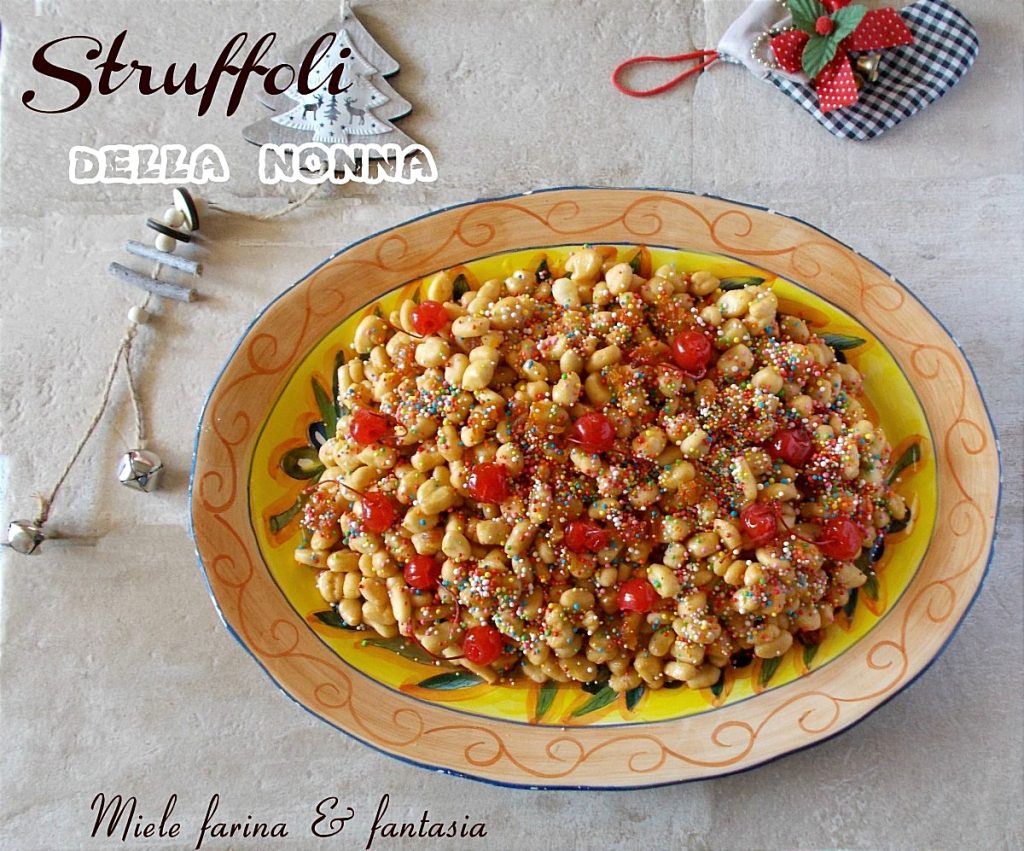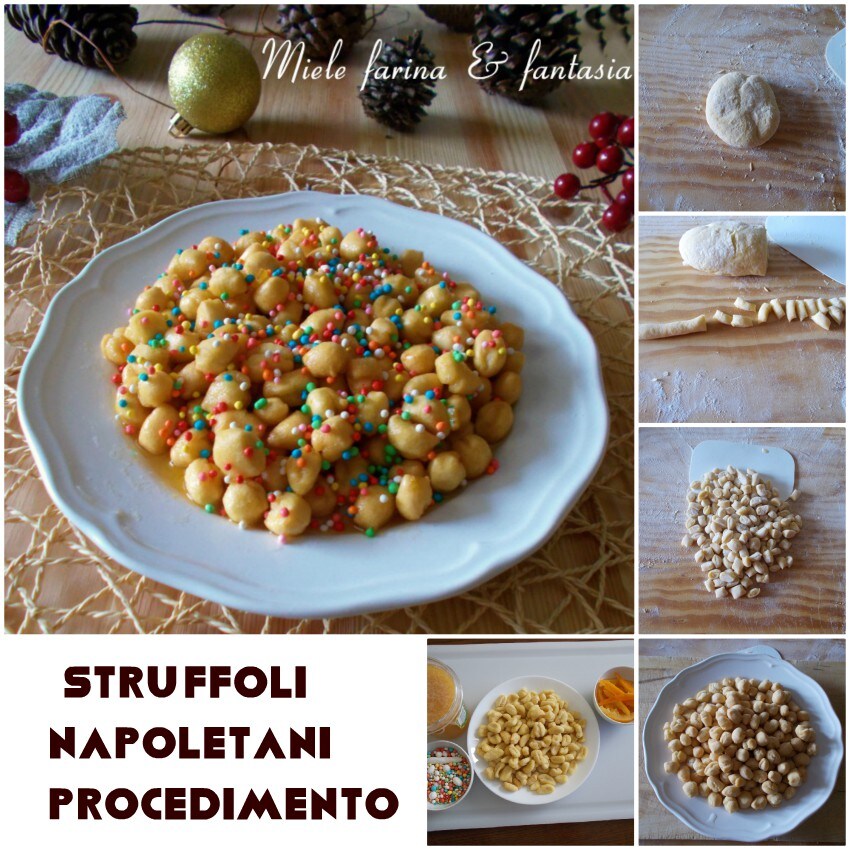Neapolitan struffoli are tiny Christmas pastries, soaked in honey and decorated with candied citrus peels and colorful sprinkles typical of Campania. The basic dough for struffoli is very simple and easy to make. Every family has their own version, and over the years, the recipe for struffoli has been enriched with ingredients. This one I propose is the basic, ancient, country version that has been passed down in my family for years. Struffoli, like many Christmas sweets, can be made a long time in advance, even up to ten days before Christmas, as they retain their flavor; indeed, as the days pass, they become even better. Additionally, we can make them at different times, meaning it is not necessary to glaze them with honey immediately after frying. We can do it the next day, without too much effort. The sprinkles, however, should be added immediately after glazing and plating, so they adhere well. Some tips. The dough should be neither too firm nor too soft; furthermore, after cooking, the struffoli should become harder, as tradition dictates. The flour should be weak, so a 00 flour is more than suitable. The honey to use is strictly raw honey (in this period it can be easily found in supermarkets), because it must “hold together,” supporting the struffoli without slipping away. This type of honey, in fact, liquefies with heat and then hardens again as it cools.

- Difficulty: Very Easy
- Cost: Economical
- Preparation time: 3 Hours
- Portions: about 1 lb
- Cooking methods: Frying
- Cuisine: Italian
- Seasonality: Christmas, New Year's Eve
Ingredients
- 2 1/2 cups 00 Flour
- 3 Eggs (medium)
- 1 pinch Fine salt
- 1 tablespoon Sugar
- as needed Liqueur
- 8.8 oz Raw honey
- as needed Colorful and white sprinkles
- as needed Orange peel
- as needed Candied fruit
Preparation
1) Sift the flour into a stand mixer (or a large bowl). Add the salt, a scant tablespoon of sugar, a scant tablespoon of limoncello or Strega, and the whole eggs. Briefly knead until all ingredients are absorbed by the flour. There’s no need to work the dough for long; it should be firm and compact. Turn the dough onto a lightly floured table, knead for a few more moments, and shape it into a ball. You’ll get an elastic, compact, and fairly soft dough. Cover it and let it rest for at least 15 minutes to allow the gluten to relax, making the subsequent processing easier.
2) After the resting time, divide the dough into many small pieces from which we’ll make thin, long sticks more than 8 inches in length. The dough’s elasticity will facilitate this operation.
3) From each stick, cut very small “gnocchetti” with a spatula or knife, as they will double in size during cooking. Place the struffoli on baking trays lined with parchment paper, lightly floured. When we’re done forming them, dust them with a bit more flour on top to prevent them from sticking to each other or the parchment paper.
4) Heat seed oil in a pan or pot with high edges (it’s important that it is). When the oil is hot, start frying the struffoli, a handful at a time (make sure to sift off excess flour before frying them), until they turn golden. During cooking, foam may form and rise in the pot; hence the need to use a pan or pot with high edges. By turning the struffoli in the oil, for uniform cooking, we’ll prevent this hot foam from overflowing. Change the oil if it becomes dark.
5) Drain the struffoli with a slotted spoon as they’re ready and place them in a bowl even without absorbent paper, as fortunately, they don’t absorb oil. When freshly cooked, they are very soft; they will harden as they cool.
6) Glazing. Melt the raw honey in a pot over very low heat. When it has become completely liquid, pour in the struffoli and stir for about a couple of minutes to distribute it evenly and allow the honey to lose some of its moisture. To further flavor our struffoli, add grated orange zest to the melted honey.
7) Quickly transfer the glazed struffoli to 2 medium-sized flat serving plates and shape them as desired, creating “ring”, “cone” compositions, etc. This operation should be done while the sweets are still very hot, as the honey will harden as it cools, making plating and shaping difficult. Decorate them immediately with colorful sprinkles, dragées, and candied peels. The Neapolitan struffoli are ready; we just need to let them soak in flavor for at least a day before enjoying them. They keep at room temperature, well covered, for over a week.


